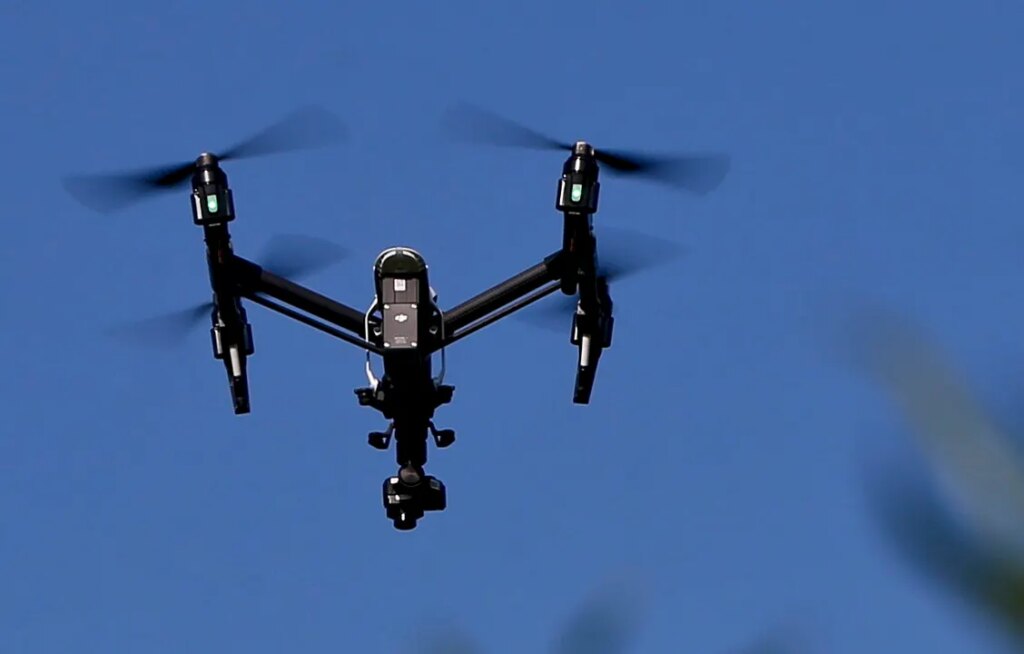NEWYou can now listen to Fox News articles!
FIRST ON FOX: A group of House Republicans is demanding details on how government agencies are addressing the growing threat of unauthorized drone incursions on U.S. military installations.
In letters sent Thursday, the Subcommittee on Military and Foreign Affairs requested a trove of documents and communications from the Departments of Defense (DoD), Transportation (DOT), and Justice (DOJ).
The letters note that in 2024 alone, there were 350 drone incursions at over 100 U.S. military bases.
Lawmakers believe many of the responses to the illegal incursions, including an instance where a group of drones traipsed over Langley Air Force Base for over two weeks in December 2023, have been insufficient and fragmented.
US MILITARY WOULD BE UNLEASHED ON ENEMY DRONES ON THE HOMELAND IF BIPARTISAN BILL PASSES
Under current rules, base commanders must establish “hostile intent” before taking action — a threshold the lawmakers say is ill-suited to fast-moving and ambiguous drone threats.
Coordination between military installations, the DOJ, Federal Aviation Administration (FAA), and local law enforcement is often “improvised and bureaucratically delayed,” the letter states, leaving gaps that adversaries could exploit.
To assess the issue, Republicans are asking the agencies to turn over documents by July 10, including: all interagency policies and agreements on drone detection and mitigation; a list of all facilities protected under Title 10 Section 130(i); communications involving DoD, DOJ, FAA, and others about drone threats and authority gaps; all incident reports related to drone incursions since January 2022; any internal reviews assessing current legal frameworks and recommending reforms; plans for a joint federal-state-local task force on counter-drone coordination.
Fox News Digital has reached out to DoD, DOJ, and DOT for comment.
PENTAGON LACKS COUNTER-DRONE PROCEDURE LEADING TO INCURSIONS LIKE AT LANGLEY, EXPERTS SAY

The lawmakers frame their demands as part of a broader push for legislative reform and operational clarity in the face of escalating drone threats to national security. “This is a rapidly evolving threat that requires a unified and proactive response,” the letter states, emphasizing the need for better data sharing and resource allocation between agencies.
The threat comes at a time when the lethal capabilities of modern drone warfare have been proven on the ground in Ukraine and in the Middle East.
READ THE LETTER BELOW. APP USERS: CLICK HERE
From the early days of Russia’s 2022 invasion, unmanned aerial systems (UAS) have been deployed with devastating effect by both Russian and Ukrainian forces, transforming how battles are fought and how intelligence is gathered. What began as surveillance and artillery-spotting platforms has evolved into a full-scale integration of explosive-laden loitering munitions, or “kamikaze drones,” capable of precision strikes deep behind enemy lines.
One of the most notorious platforms is the Iranian-made Shahed-136, a low-cost, GPS-guided drone that Russia has used in swarms to overwhelm Ukrainian air defenses and strike civilian infrastructure, including power stations and residential areas. These drones, launched in waves, have been used to sow terror and inflict strategic damage while costing a fraction of conventional missiles. Ukraine, for its part, has responded with creative adaptations, converting consumer camera drones into improvised bombers and launching strikes on Russian trenches, vehicles, and even naval assets in the Black Sea.
Israel used drones alongside warplanes to assault top generals and key military and nuclear facilities in Operation Rising Lion this month. Iran fired back its own onslaught of drones toward Israel.
Military analysts have said Ukraine represents the first major war where drones are central to strategy, not just supporting tools. Their widespread deployment has forced a tactical rethink, prompted innovations in electronic warfare and counter-UAS systems, and prompted debate about how quickly drones may outpace manned aircraft in aerial combat.
Read the full article here

